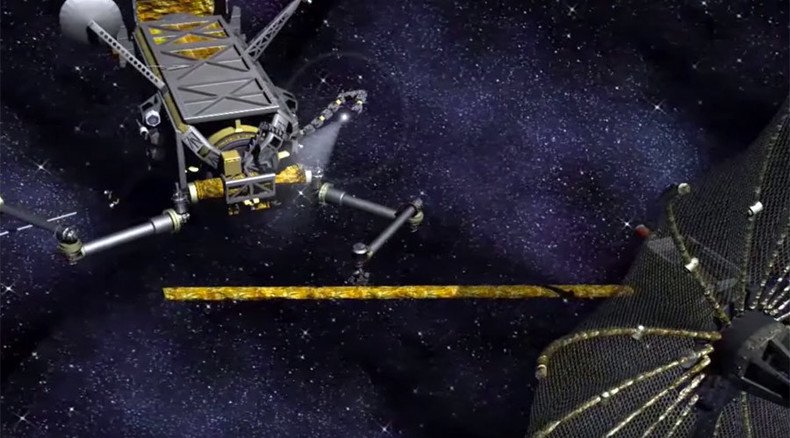Robot repairs: DARPA eyes droid orbital facility for satellites

US military researchers want to develop a robotic repair facility in high Earth orbit, boosting the lifespan of commercial communications and military spy satellites. The ability to repair or resupply satellites would also cut down on space junk.
“Look at the great seafaring port cities in the world for inspiration, and imagine a port of call at 36,000 kilometers,” said Pam Melroy of the Defense Advanced Research Projects Agency (DARPA) at a recent conference in St. Louis.
Most of the world’s telecommunication satellites sit in the geostationary orbit (GEO), some 22,000 miles – 36,000 kilometers – above the equator, matching their orbiting speed to the planetary rotation so they can hover over the same location. Their altitude is 90 times higher than the low Earth orbit (LEO) of the International Space Station, meaning that they are impossible to reach for repairs or upgrades.
This not only means the satellites have to rely for years on technology that rapidly becomes outdated on Earth, but also that they become flying junk once their power is used up, usually within 15 years of launch. Cosmic radiation in GEO is too high for human astronauts, however – which is where robots come in. An orbital facility staffed entirely by remotely-operated probes could maintain, upgrade and resupply the satellites, cutting down on expensive space launches and orbital junk.

“Right now, we don’t build satellites to be serviced, but once we have that capability, then you can start seeing things like modular, serviceable satellites that become routine,” said Melroy, deputy director of DARPA’s Tactical Technology Office.
Major commercial satellite operators are very interested in the project, which DARPA has dubbed Phoenix. The ability to refuel, service and upgrade the satellites would save outfits like Intelsat and Eutelsat millions of dollars in launch costs.
US Military Foresees Robot-Run 'Transportation Hub' in Space http://t.co/hMTNZ5BkHXpic.twitter.com/ALeIZCMBk4
— SPACE.com (@SPACEdotcom) September 14, 2015The US military, which operates its own network of communications satellites in GEO, is more interested in upgrades. Military satellites are up in orbit for 30 years at a time, and the Pentagon would very much like to have the latest technology aboard, Melroy added.
Project Phoenix was conceived a decade ago, but has begun taking shape since 2012. DARPA is currently developing robotic components that would eventually be assembled into the “Servicer/Tender” vehicle. Another component of the program is the use of modular “satlets,” small independent modules that could be combined for various missions and replaced by the robotic tenders when required.
Jeremy Palmer, DARPA: first flight test of “satlet” tech developed under Phoenix on mission scheduled for launch early 2016. #aiaaspace
— Jeff Foust (@jeff_foust) August 31, 2015DARPA is also looking into means of outfitting launch vehicles with pods that could deliver the satlets, satellites, and robotic repair probes into GEO. The first orbital tests for the satlet and pod technology are expected in the next year or two.












